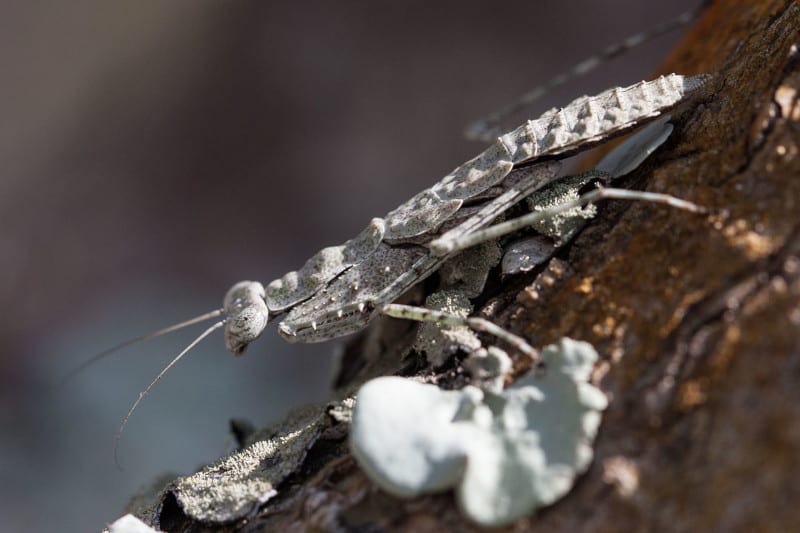
Grizzled Mantis Facts
- The highly descriptive term of Grizzled Mantis serves as generally used common name for a most unusual variety of mantid. But that’s not its only name. Professional researchers likely know it better by the scientific name of the Gonatista grisea.
- Regardless of the name used for this mantis, it remains a most remarkable species. This holds true due to the extreme camouflage abilities it displays. While most mantises utilize this principle, very few take it to the level of this creature.
- The first known identification of this marvel of Nature actually occurred more than two centuries ago. More precisely, that took place in the year 1793. That arose from the incredible work of the Danish zoologist Johan Christian Fabricius.
- For the moment, the IUCN has no listing for this species. Any such listing would appear on the organization’s Red List of Threatened Species. This occurs because of a combination of its natural range and apparently stable population base.
- The Grizzled Mantis, like many related species, nonetheless may be considered to be at risk. Just as them, this insect must deal with ever-declining choices of habitat. It must, however, also be considered to be at further risk from the effects of climate change.
Related Articles
Brown Mantis
Grizzled Mantis Physical Description
While the beautiful Grizzled Mantis does impress the viewer, it does not do so due to physical size. In point of act, this amazing invertebrate represents slightly smaller than average-sized variety of mantid. Like its many brethren, it also displays sexual dimorphism.
In its case, though, the difference remains quite small. As it happens, females attain an average body length roughly 0.08 in (2 mm) greater than the males. Males reach an average length equaling 1.5 in (38 mm). Meanwhile, the females average 1.58 in (40 mm) long.
The males also tend to have a somewhat slimmer form than their female counterparts. Otherwise, both genders appear identical. The overall color scheme consists of a grayish-green, with mottled dark markings. These usually appear as a mix of brown and black.
It head further displays the triangular shape typical of mantises. However, the eyes of the Grizzled Mantis grow particularly large. Those of the males generally grow slightly larger. The antennae of this species are commonly about half the length of the body.
- Kingdom: Animalia
- Phylum: Arthropoda
- Class: Insecta
- Order: Mantodea
- Family: Mantidae
- Genus: Gonatista
- Species: G. grisea
Grizzled Mantis Distribution, Habitat, and Ecology
The fabulous Grizzled Mantis has a moderately extensive range of habitation. However, that’s also quite broken in nature. The majority of individuals appear in an area from the states of Florida to South Carolina, in the United States, in North America.
But, scattered smaller populations also appear kin other locations. These include portions of Cuba, Jamaica, and Puerto Rico. Yet, it remains unknown if these represent true native populations. The possibility exists that these could have been unknowingly transplanted.
Wherever it appears, the arthropod has decided habitat preferences. This species prefers any area with plentiful foliage, most especially various trees. Obviously, this mainly includes local forests, but can include parks, and even private yards.
Like other mantids, the fascinating Grizzled Mantis evolved as a fully predatory carnivore. In its case, it prefers to hunt on trees, where it can make maximum use of its camouflage abilities. Its prey consists almost exclusively of varying small arthropods.
After mating, eggs are enclosed in a protective case. Most commonly, the female attaches this to a leaf or twig. As many as 200 eggs may be found in a single case, known as an ootheca. Once hatched, these quickly progress to adulthood, usually with a 1-year life span.
Species Sharing Its Range
Check out our other articles on Earth’s Many Magnificent Bees, Guinan cock-of-the-rock, Le Morne Brabant, Regal Birdflower, Chamois, Giant Ichneumon Wasp, Blue-lipped sea krait
